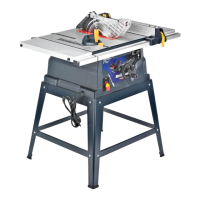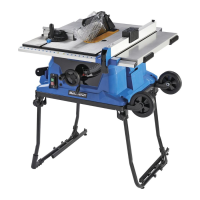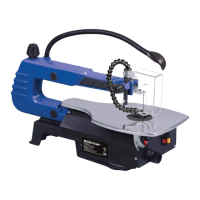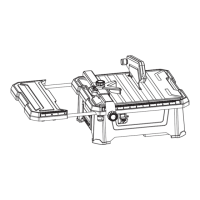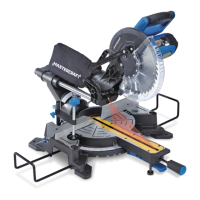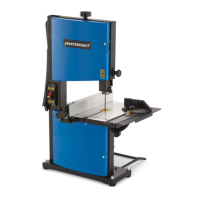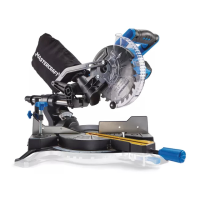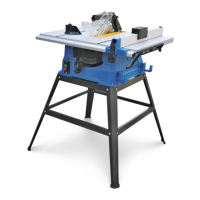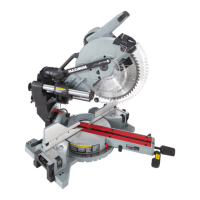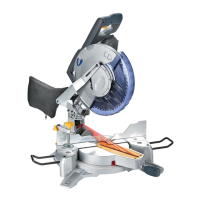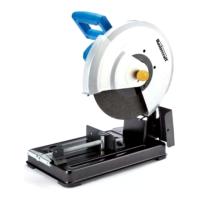25
2. Use only saw blades designed for maximum safe operating speeds of
6000 RPM or greater.
3. Saw blades should always be kept sharp. It is recommended that you
locate a reputable sharpening service to sharpen your blades when
needed.
4. Never stack blades on top of one another to store. Place material such as
cardboard between them to keep the blades from coming into contact with
one another.
There are two basic types of cuts: ripping and crosscutting. In general,
cutting with the grain is ripping, and cutting across the grain is crosscutting.
However, this distinction is somewhat difficult to make with man-made
materials. Therefore, cutting a piece of wood to a different width is ripping,
and cutting across the short dimension is crosscutting. Neither ripping nor
crosscutting may be done safely freehand! Ripping requires the use of the
rip fence, and crosscutting uses the mitre gauge.
RIPPING (Refer to Fig. 23)
WARNING! To reduce the risk of injury, turn the saw off and disco
nnect
it from the power source before installing and removing accessories, before
adjusting or changing set-ups, or when making repairs. An accidental start-up
can cause injury.
WARNING! Never touch the “free end” of the workpiece or a “free p
iece”
that is cut off, while the power is ON and/or the saw blade is rotating. The piece
may contact the blade, resulting in a thrown workpiece or possible
injury.
WARNING! Keep the saw blade guard, spreader, and anti-kickback
pawls in
place and operating properly. Keep the teeth sharp. The spreader must be in
alignment with the saw blade, and the teeth must stop a kickback once it has
started. Check their action before ripping by pushing the wood under the anti-
kickback teeth. The teeth must prevent the wood from being pulled toward the
front of the saw.
WARNING! A rip fence should ALWAYS be used for ripping oper
ations in
order to prevent loss of control and personal injury. NEVER perform a ripping
operation freehand. ALWAYS lock the fence to the rail.
WARNING! When bevel ripping, and whenever possible, place the
fence
on the side of the blade so that the blade is tilted away from the fence and the
hands. Keep your hands clear of the blade, and use a push stick to feed the
workpiece if there is less than 6” (152 mm) between the fence and the blade.
1. Lock the rip fence by pressing the locking lever down. Remove the mitre
gauge.

